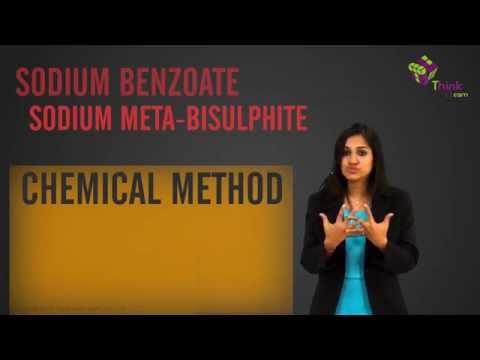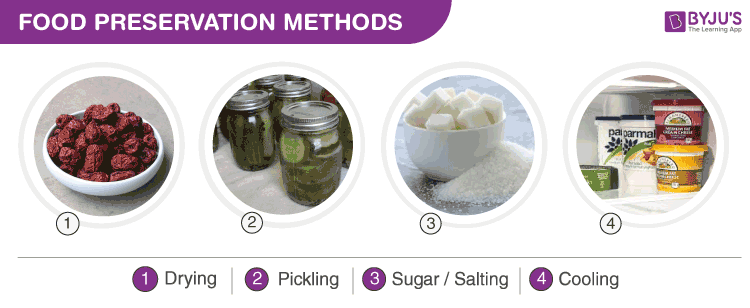
Food is a source of energy for all of us. Unhealthy or spoiled food is the major cause of diseases in humans. This is known as food poisoning. To prevent this the food needs to be preserved in a variety of ways. Read on to explore what is food preservation and different methods of food preservation.
Also Read: Food Processing
Food Preservation Definition
“Food preservation is the technique to prevent food spoilage, food poisoning, and microbial contamination in food.”
What is Food Preservation?
Food preservation is one of the methods to protect food from unwanted microbial growth. After the food is produced, we store and protect by covering the rice and curry with lids to keep away flies and other insects. By this, we are protecting it from any infection caused by them. This is a short-term condition. Food preservation, on the other hand, is done to preserve food for a longer time.
Also Read: Food Processing
Objectives of Food Preservation
Following are the important objectives of food preservation:
- To prevent microbial contamination.
- To kill pathogens.
- To minimise food spoilage and food poisoning.
Food Preservation Methods
Food preservation started long back in ancient times. Cooling, freezing, fermentation, sun-drying, etc., are few age-old food preservation techniques. With the advent of technology, modern methods of food preservation were developed. Chemicals and other natural substances were used for preservation. These substances are known as preservatives. Let us discuss some of the methods of preservation in detail.

Methods of Food Preservation
Chemical Method
Salt and edible oils are two main preservatives which are used since ages to prevent microbial growth. This is why we add extra oil to pickles. Preservation by salt is known as salting. Salting helps to preserve fruits for a long term. Meats and fishes can also be preserved by salting.
Other synthetic preservatives include vinegar, sodium benzoate, sodium metabisulphite, etc.
Sugar
Sugar is another common preservative used in jams and jellies. Sugar is a good moisture absorbent. By reducing moisture content, it restrains the microbial growth.
Heat and Cold Methods
Boiling and refrigeration prevent around 70 percent of microbial growth. Boiling kills the microorganisms that cannot tolerate extreme temperatures. Thus, it helps in food preservation.
Refrigerators have very low temperatures. Since microbes do not get optimum temperature they need for growth, their growth is inhibited. Pasteurization developed by Louis Pasteur is used until today to preserve milk.
Smoking
Smoking prevents dehydration in fish and meat and thus prevents spoilage. The wood smoke contains a large number of anti-microbial compounds that slow the rancidification of animal fats.
Canning
The food contents are sealed in an airtight container at high temperatures. Meat, fish, fruits are preserved by canning.
Sterilization
This method is carried out to remove microbes from food. For eg., milk sterilization at 100°C kills the microbes.
Dehydration
It is the process of removal of water from food. It is the simplest method and prevents food spoilage by removing water.
Lyophilization
This is the process of freezing and dehydration of the frozen product under vacuum.
Radiation
This method is also known as cold sterilization. The UV rays, X rays, gamma rays kill all the unwanted microbes present in food.
Also Read: Food Poisoning
The principle behind all these methods is either to reduce the temperature conditions required for microbial growth or to evaporate the water content.
To learn more about what is food preservation, its definition and food preservation methods, keep visiting BYJU’S website or download BYJU’S app for further reference.


Nice work
Good ????
I want to ask that can you give some methods definition like pickling, canning, bottling, deep freezing, drying, refrigerating only this much definition
Thank you for your interest. We will update topics for that very soon.
What is fermentation???????????????????
Fermentation is a process by which molecules such as glucose are broken down anaerobically to produce alcohol and acid. Read more at https://byjus.com/biology/fermentation-anaerobic-respiration/
Explain 5 methods of food preservation.